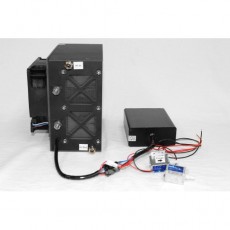
So, you have bought a fuel cell and are ready to start using it.
Or are you?
Did you plan on any of the ancillary components you might need? Depending on who you buy the fuel cell from and what model it is will determine what components come with the fuel cell and what you will need to buy. In general, a fuel cell system needs several things in order for it to work in any system:
- Hydrogen storage (which may also include Hydrogen production)
- Fuel Cell system
- Power conditioning
Hydrogen Storage
Even if you are generating your hydrogen on-site, you will almost certainly need some hydrogen storage. There are several different options for storage, including:
- Compressed Hydrogen tanks
- Liquid Hydrogen tanks
- Metal Hydrides
- Other, less common storage methods (liquid storage, sodium borohydride, etc)
Each of these has its own advantages and are best suited for different applications. However, for most applications, Compressed hydrogen storage is the easiest, most economical and most readily available method. This could be simple hydrogen cylinders from your local welding or gas supply shop (be sure the purity is suitable for your fuel cell), or more advanced carbon fiber cylinders. A single standard k-bottle of Ultra-High Purity (UHP) hydrogen should contain about 5500 L of hydrogen, and are usually charged to around 2300 psi.
Don't forget to make sure you have a pressure regulator to go from the tank pressure down to the operating pressure of the fuel cell (some tanks have these integrated, while some don't). You will probably also need a refueling port or at least a fitting to re-fill your tanks with.
Fuel Cell
There are many fuel cell manufacturers out there that make their own a fuel cells systems. When reviewing each fuel cell system, you need to be sure that you understand what each system includes in order to be certain that you will have everything you need to operate when your fuel cell system arrives.
Power Conditioning
Power conditioning is basically electronics that take the direct current (DC) voltage from the fuel cell which will fluctuate depending on the load and converts it into a stable voltage of your choosing (either AC or DC). Depending on the amount of power you are dealing with and your end requirements this could be as simple as a low-cost DC/DC converter or DC/AC inverter from any electronics shop to a full custom, multiple voltage power controller.
Safety
You may also want some hydrogen sensors to detect any leaks and safely shut the system down if it does. Again, some fuel cell systems may incorporate these into their packaging, others may not. In any case, if you are putting the tank and/or fuel cell in any kind of enclosure, you will need sensors and safety equipment.













Enter the code in the box below: